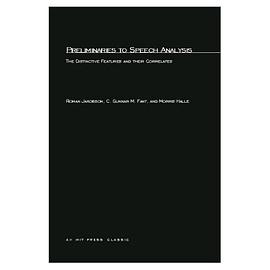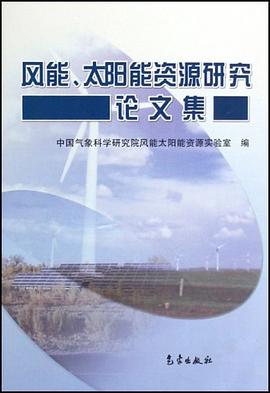CONTENTS
Preface...................................................................................................................................xiii
Understanding & Harnessing Wavelet “Elephants”..........................................................xiii
How this Book Differs from Other Wavelet Texts............................................................xv
How this Book is Laid Out—Study Suggestions..............................................................xvi
Acknowledgments................................................................................................................xxi
1
Preview of Wavelets, Wavelet Filters, and Wavelet Transforms..................................1
1.1 What is a Wavelet?.........................................................................................................2
1.2 What is a Wavelet Filter and how is it different from a Wavelet?..................................3
1.3 The value of Transforms and Examples of Everyday Use.............................................6
1.4 Short-Time Transforms, Sheet Music, and a first look at Wavelet Transforms............8
1.5 Example of the Fast Fourier Transform (FFT) with an Embedded Pulse Signal.........11
1.6 Examples using the Continuous Wavelet Transform...................................................13
1.7 A First Glance at the Undecimated Discrete Wavelet Transform (UDWT)................19
1.8 A First Glance at the conventional Discrete Wavelet Transform (DWT)...................24
1.9 Examples of use of the conventional DWT..................................................................27
1.10 Summary....................................................................................................................29
2
The Continuous Wavelet Transform (CWT) Step-by-Step........................................31
2.1 Simple Scenario: Comparing Exam Scores using the Haar Wavelet..............................31
2.2 Above Comparison Process seen as simple Correlation or Convolution.....................34
2.3 CWT Display of the Exam Scores using the Haar Wavelet Filter................................37
2.4 Summary......................................................................................................................41
3
The Undecimated Discrete Wavelet Transform (UDWT) Step-by-Step...................43
3.1 Single-Level Undecimated Discrete Wavelet Transform (UDWT) of Exam Data.......43
3.2 Frequency Allocation of a Single-Level UDWT..........................................................46
3.3 Multi-Level Undecimated Discrete Wavelet Transform (UDWT)..............................49
3.4 Frequency Allocation of a Multiple-Level UDWT.....................................................53
3.5 The Haar UDWT as a Moving Averager.....................................................................56
3.6 Summary......................................................................................................................57
4
The Conventional (Decimated) DWT Step-by-Step....................................................59
4.1 Single-Level (Decimated) Discrete Wavelet Transform (DWT) of Exam Data............59
4.2 Additional Example of Perfect Reconstruction in a Single-Level DWT.......................63
4.3 Compression and Denoising Example using the Single-Level DWT............................64
4.4 Multi-Level Conventional (Decimated) DWT of Exam Data using Haar Filters.........65
4.5 Frequency Allocation in a (Conventional, Decimated) DWT......................................68
4.6 Final Approximations and Details and how to read the DWT Display......................70
4.7 Denoising using a Multi-Level DWT...........................................................................72
4.8 Summary......................................................................................................................77
5
Obtaining Discrete Wavelet Filters from “Crude” Wavelet Equations....................79
5.1 Review of Familiar DSP Truncated Sinc Function.......................................................79
5.2 Adding More Points at the Ends for Better Filter Performance..................................80
5.3 Adding More Points by Interpolation for Lower Cutoff Frequency...........................82
5.4 Multi-Point Stretched Filters (“Crude Wavelets”) from Explicit Equations...............83
5.5 Mexican Hat Wavelet Filter as an Example of a Stretched Crude Filter......................84
5.6 Morlet Wavelet as another example of Stretched Crude Filters...................................90
5.7 Bandpass Characteristics of the Mexican Hat and Morlet Wavelet Filters.................94
5.8 Summary......................................................................................................................98
6
Obtaining Variable Length Filters from Basic Fixed Length Filters.....................101
6.1 Review of Conventional Interpolation Techniques from DSP...................................101
6.2 Interpolating the Basic “Mother” Wavelet by Upsampling and Lowpass Filtering..106
6.3 Frequency Characteristics of the Basic and Stretched Haar Filters...........................110
6.4 Perfect Overlay of Filter Points on the “Continuous” Wavelet Estimation..............114
6.5 Frequency Characteristics of some of the Basic Filters.............................................117
6.6 Summary....................................................................................................................119
7
Comparison of the Major Types of Wavelet Transforms..........................................121
7.1 Advantages and Disadvantages of the Continuous Wavelet Transform....................121
7.2 Stretching the Wavelet—The Undecimated Discrete Wavelet Transform.................124
7.3 Shrinking the Signal—The Conventional Discrete Wavelet Transform.....................129
7.4 Relating the Conventional DWT to the Continuous Wavelet Transform..................135
7.5 Decomposing All the Frequencies—The Wavelet Packet Transform........................137
7.6 Summary....................................................................................................................140
8
PRQMF and Halfband Filters and How they are Related.........................................141
8.1 Perfect Reconstruction Quadrature Mirror Filters and their Inter-Relationships......141
8.2 Perfect Reconstruction Begins with the Halfband Filters..........................................144
8.3 Properties of the Halfband Filters..............................................................................147
8.4 “Reverse Engineering” Perfect Reconstruction to Produce the Basic Filters.............150
8.5 Orthogonal Vectors, Sinusoids, and Wavelets............................................................155
8.6 Biorthogonal Filters—Another Way to Factor the Halfband Filters.........................161
8.7 Summary....................................................................................................................167
9
Highlighting Additional Properties by using “Fake” Wavelets...............................169
9.1 Matching the Wavelet to the Signal and the Concept of Regularity..........................169
9.2 Customized Wavelets, Best Basis, and the “Sport of Basis Hunting”......................174
9.3 Vanishing Moments and another Fake Wavelet.........................................................175
9.4 Examples of Use of Vanishing Moments...................................................................178
9.5 Finding the “Magic Numbers” of Basic Db4 Filters using Wavelet Properties.........183
9.6 Summary....................................................................................................................184
10 Specific Properties and Applications of Wavelet Families.......................................187
10.1 (Real) Crude Wavelets..............................................................................................188
MEXICAN HAT WAVELET .......................................................................................189
MORLET WAVELET .................................................................................................190
GAUSSIAN WAVELETS ............................................................................................191
MEYER WAVELETS .................................................................................................192
10.2 Complex Crude Wavelets.........................................................................................194
SHANNON (“SINC”) WAVELET.................................................................................194
COMPLEX FREQUENCY B-SPLINE WAVELETS .......................................................198
COMPLEX MORLET WAVELET ................................................................................201
COMPLEX GAUSSIAN WAVELETS ...........................................................................201
10.3 Orthogonal Wavelets................................................................................................203
HAAR WAVELETS....................................................................................................204
DAUBECHIES WAVELETS .......................................................................................205
SYMLETS .................................................................................................................207
COIFLETS ................................................................................................................209
DISCRETE MEYER WAVELETS ...............................................................................211
10.4 Biorthogonal and Reverse Biorthogonal Wavelets...................................................214
BIORTHOGONAL WAVELETS...................................................................................214
REVERSE BIORTHOGONAL WAVELETS..................................................................216
10.5 Summary and Table of Wavelets and their Properties.............................................217
TABLE 10.5–1 - ATTRIBUTES OF THE VARIOUS WAVELETS (FILTERS) .................219
11 Case Studies of Wavelet Applications.........................................................................221
11.1 White Noise in a Chirp Signal..................................................................................221
11.2 Binary Signal Buried in Chirp Noise........................................................................225
11.3 Binary Signal with White Noise...............................................................................230
11.4 Image Compression/De-noising................................................................................236
11.5 Improved Performance using the UDWT................................................................241
11.6 Summary..................................................................................................................249
12 Alias Cancellation in the Conventional (Decimated) DWT....................................251
12.1 DWT Alias Cancellation Demonstrated in the Time Domain..................................251
12.2 DWT Alias Cancellation Demonstrated in the Frequency Domain.........................261
12.3 Relating the Above Concepts to Equations Found in the Traditional Literature.....271
12.4 Summary..................................................................................................................278
13 Relating Key Equations to Conceptual Understanding............................................281
13.1 Building the Scaling Function from The “Dilation Equation”..................................281
13.2 Building the Scaling Function Using Upsampling and Simple Convolution............288
13.3 Building the Wavelet Function from the Dilation Equation.....................................291
13.4 Building the Wavelet Function Using Upsampling and Simple Convolution..........294
13.5 “Forward DWT”, “Inverse DWT” and Other Terms from Wavelet Literature.......296
13.6 Summary..................................................................................................................299
Postscript...............................................................................................................................301
Appendix A: Relating Wavelet Transforms to Fourier Transforms...............................A1
A.1 Example of a Pathological Case Using the Fast Fourier Transform...........................A1
A.2 FFT and STFT Results Shown In Continuous Wavelet Transform Format.............A2
A.3 The Wavelet Terms “Approximation” and “Details” Shown in FFT Format...........A4
A.4 The FFT Presented as a Sinusoid Correlation (Similar to Wavelet Correlation)........A6
A.5 The Ordinary Acoustic Piano: An Audio Fourier Transform..................................A12
Appendix B: Heisenberg Boxes and the Heisenberg Uncertainty Principle.................B1
B.1 Natural Order of Time and Frequency.......................................................................B1
B.2 Heisenberg Boxes (Cells) and the Uncertainty Principle............................................B2
B.3 Short Time Fourier Transforms are Constrained to Fixed Heisenberg Boxes............B3
© 2009 Space & Signals Technologies LLC, All Rights Reserved. www.ConceptualWavelets.com
Appendix C: Reprint of Article “Wavelets: Beyond Comparison”.................................C1
The Discrete Fourier Transform/Fast Fourier Transform (DFT/FFT).............................C1
The Continuous Wavelet Transform (CWT)....................................................................C3
Discrete Wavelet Transforms Overview...........................................................................C7
Undecimated or “Redundant” Discrete Wavelet Transforms (UDWT/RDWT)..............C8
Conventional (Decimated) Discrete Conventional Transforms (DWT)...........................C8
Appendix D: Further Resources for the Study of Wavelets.............................................D1
D.1 Wavelet Books...........................................................................................................D2
D.2 Wavelet Articles.........................................................................................................D6
D.3 Wavelet Websites.......................................................................................................D8
Index.......................................................................................................................................I 1
· · · · · · (
收起)






















